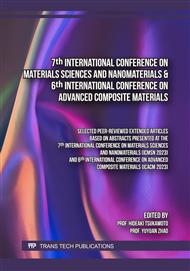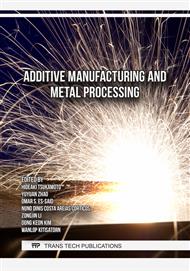p.21
p.31
p.39
p.49
p.59
p.65
p.73
p.79
p.87
A Study on the Temperature Optimization of Mold and Melt Using Design of Experiments for Children's Chair
Abstract:
The quality of the finished product is affected by a number of factors during the plastic injection molding process. Two crucial process variables in the creation of products are melted and mold temperature. The study uses the Design of Experiments tool in Autodesk Moldflow to look at the impact of melt and mold temperatures on injection molding technology. Analytical items are specifically made of polypropylene (PP) using kids' chair mold. According to simulation analysis results, there is a remarkable effect of the melt temperature on both time at end of packing as well as deflection in the range of the analytical temperature at tmold of [40, 80]°C and tmelt of [180, 220]°C. Melt temperature also shows a notable influence not only on deflection but also on sink mark depth and volumetric shrinkage, along with the criteria to evaluate the expense of a product (time at end of packing, total part weight).
Info:
Periodical:
Pages:
59-64
Citation:
Online since:
December 2023
Authors:
Price:
Сopyright:
© 2023 Trans Tech Publications Ltd. All Rights Reserved
Share:
Citation:



